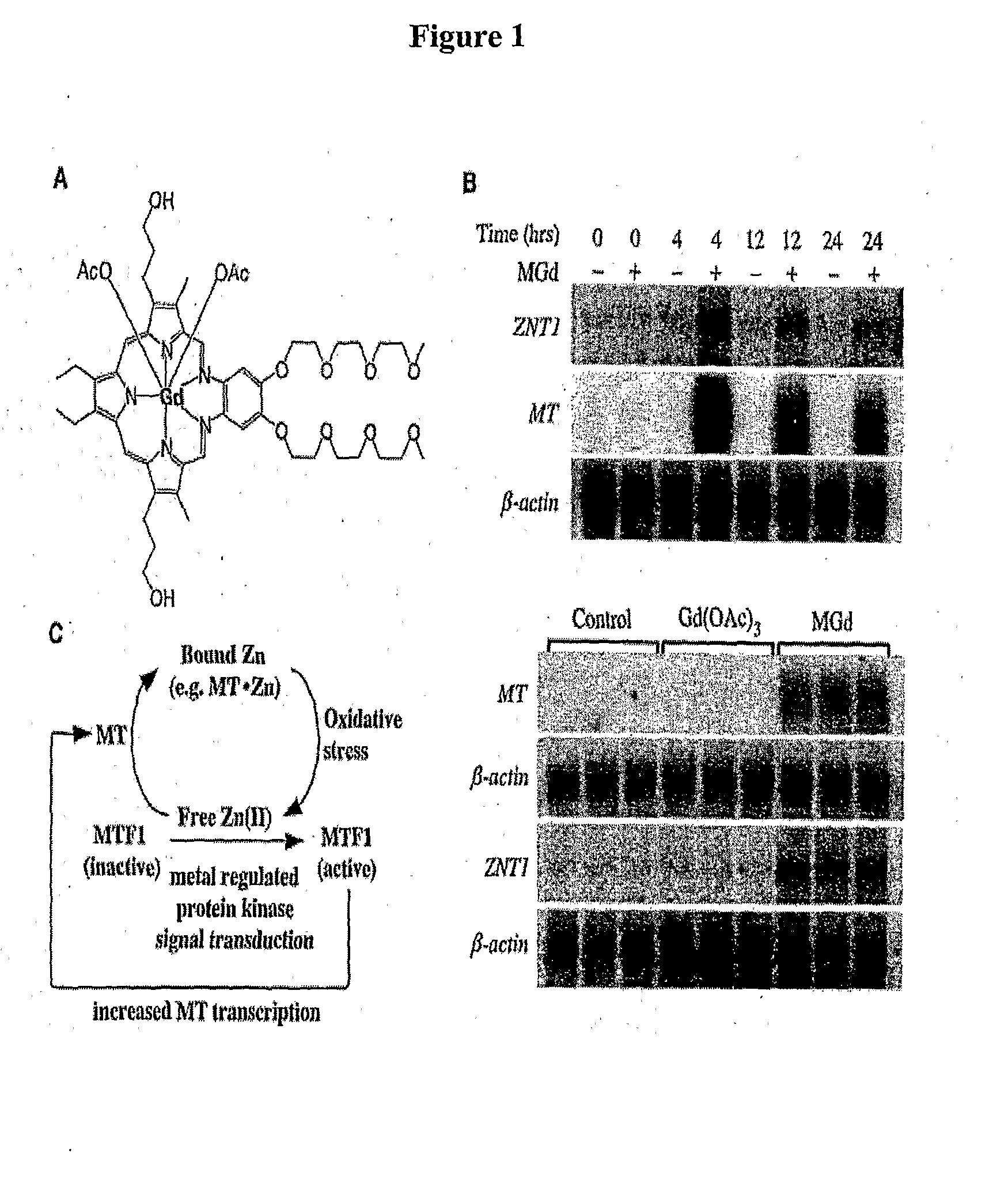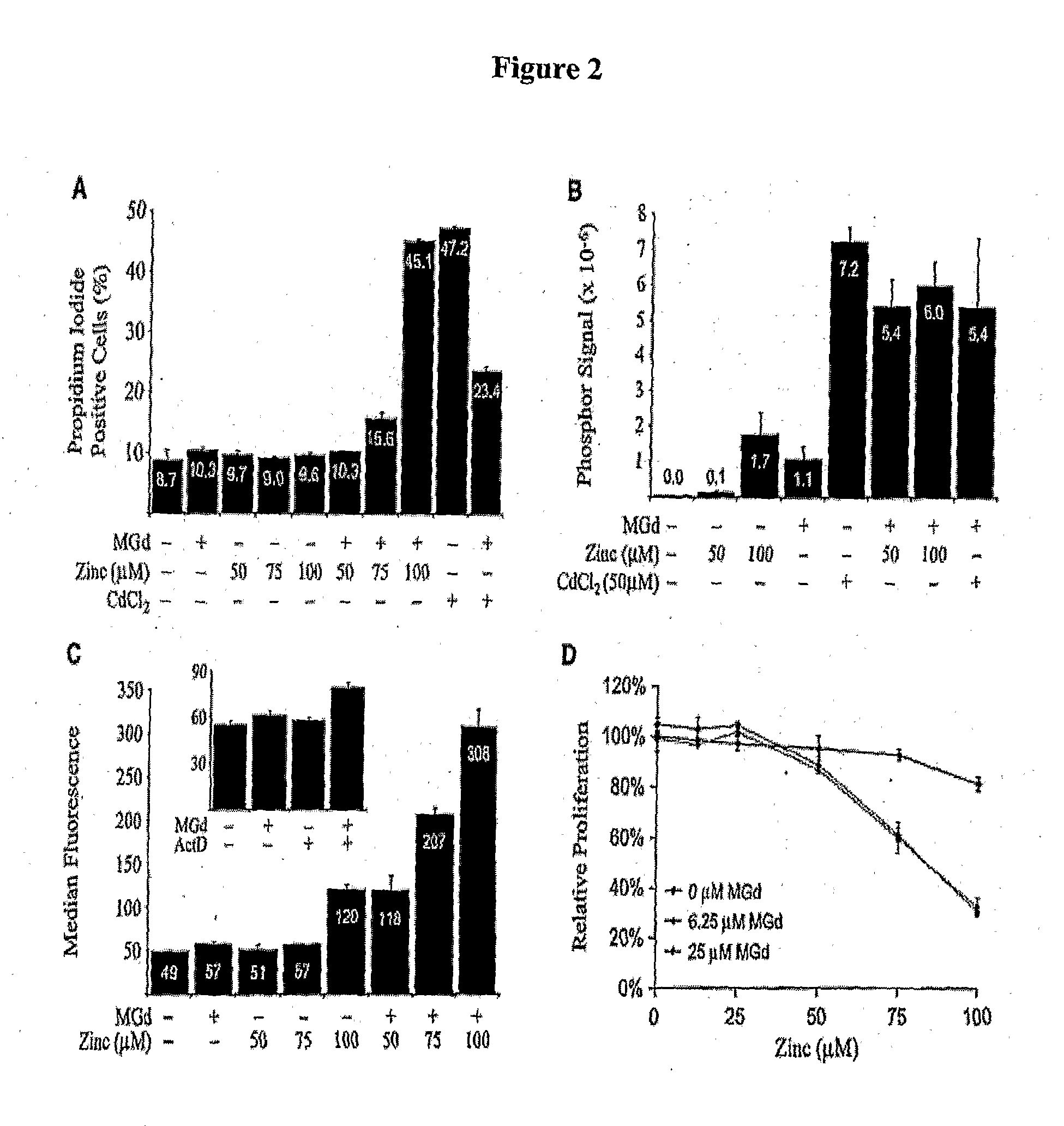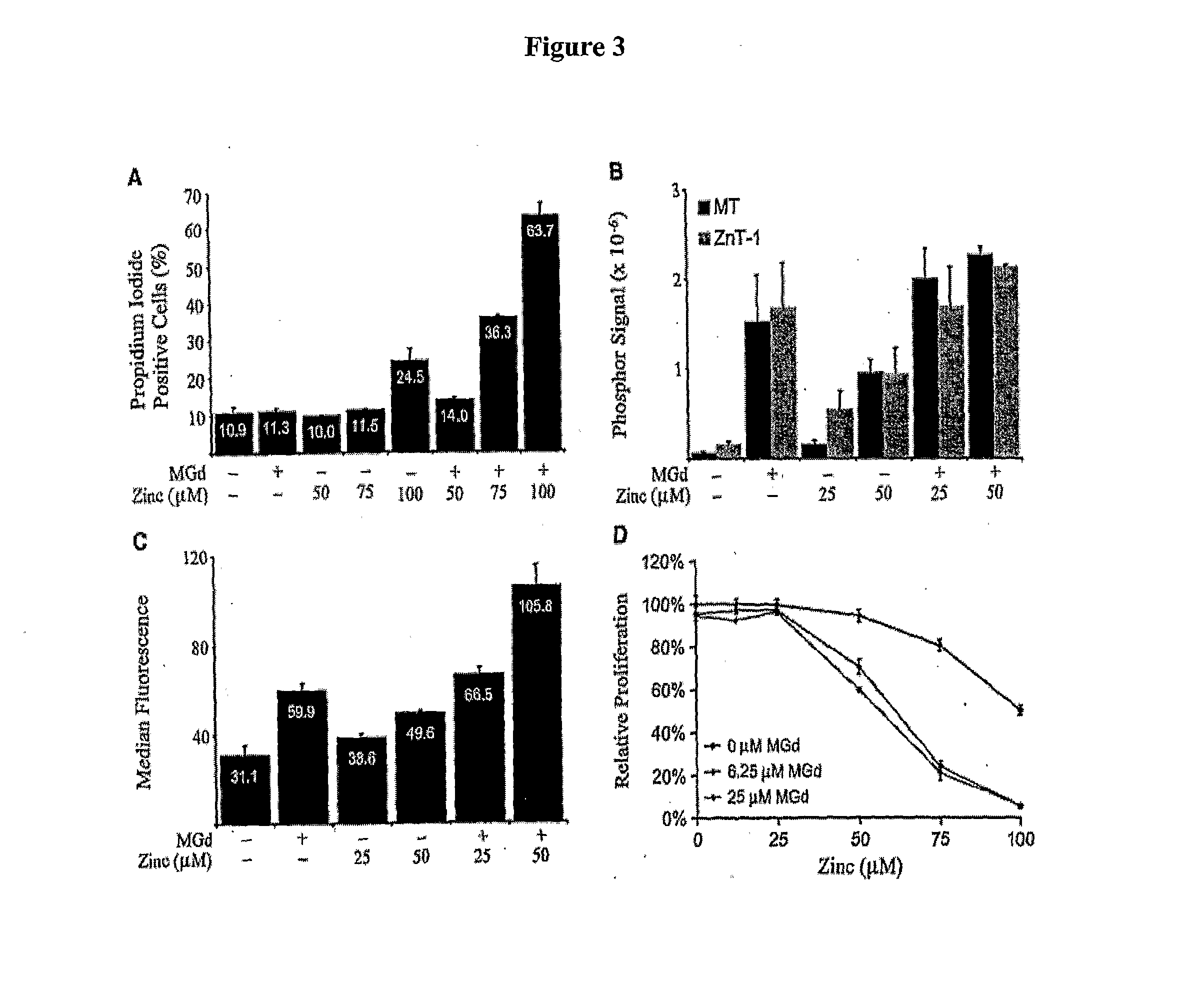Methods and compositions of treating cancer
a cancer and composition technology, applied in the field of methods and compositions of cancer treatment, can solve the problems of affecting the survival rate of cancer patients, so as to improve the survival rate, monitor and improve the effect of oxidative stress
- Summary
- Abstract
- Description
- Claims
- Application Information
AI Technical Summary
Benefits of technology
Problems solved by technology
Method used
Image
Examples
example 1
Cells and Cell Culture
[0237]Ramos, Raji, DB B-cell lymphoma, DHL-4 and HF-1 cell lines were cultured in a 5% CO2 incubator at 37° C. at a density between 0.2 and 1×106 cells / mL. Motexafin gadolinium (MGd) was prepared as a 2 mM (2.3 mg / mL) Formulation in 5% aqueous mannitol. Zinc acetate (Zn(OAc)2) and cobalt acetate (Aldrich Chemical, Milwaukee, Wis.) were used as 2 mM Formulations in 5% aqueous mannitol.
example 2
Gene Expression
[0238]Methods: A549 human lung cancer cells (6.5×105 cells per T-162 flask in 45 mL complete RPMI 1640 medium) were seeded 10 days prior to treatment of non-cycling plateau phase cultures with MGd. At 4, 12, or 24 hours prior to RNA isolation, MGd (50 μM final concentration) or control (5% mannitol) solution was added to the cultures. Each time course experiment was performed in triplicate. After incubation, all cultures were washed once with PBS and total RNA was subjected to analysis on Affymetrix U133A microarrays, designed to interrogate the relative abundance of over 15,000 human genes.
[0239]We used Microarray Suite version 5.0 software (Affymetrix) to generate raw gene expression scores and normalized the relative hybridization signal from each experiment. All gene expression scores were set to a minimum value of one hundred in order to minimize noise associated with less robust measurements of rare transcripts. The permutation-based significance analysis of mic...
example 3
Metallothionein Induction by MGd Compared to Free Gadolinium Acetate
[0241]Methods: Northern Blot Analysis—Plateau phase cultures of A549 cells were prepared as described above, except that T-25 flasks were used, and the number of cells initially plated scaled accordingly. Cultures were treated with 50 μM MGd, 5 μM Gd(OAc)3 or 5% mannitol for 4 hours, whereupon cultures were washed twice with PBS and RNA harvested as above. Alternatively, 7-day plateau phase A549 or PC3 cultures were treated with 50 μM MGd, 50-100 μM Zn(OAc)2, 50 μM CdCl2 or 5% mannitol for 24 hours (A549) or 4 hours (PC3) prior to washing and RNA analysis. Exponential phase Ramos cultures were treated for 6 hours. Northern blots were conducted and analyzed. Radio labeled metallothionein probe, designed to bind to a 113-bp region of 3′-UTR sequences from multiple metallothionein gene family members, was generated using 5′-ATGGACCCCAACTGCTCCTG-3′ (forward) and 5′-GGGCAGCAGGAGCAGCAGCT-3′ (reverse) PCR primers and the N...
PUM
| Property | Measurement | Unit |
|---|---|---|
| Fraction | aaaaa | aaaaa |
| Fraction | aaaaa | aaaaa |
| Temperature | aaaaa | aaaaa |
Abstract
Description
Claims
Application Information
 Login to View More
Login to View More - R&D
- Intellectual Property
- Life Sciences
- Materials
- Tech Scout
- Unparalleled Data Quality
- Higher Quality Content
- 60% Fewer Hallucinations
Browse by: Latest US Patents, China's latest patents, Technical Efficacy Thesaurus, Application Domain, Technology Topic, Popular Technical Reports.
© 2025 PatSnap. All rights reserved.Legal|Privacy policy|Modern Slavery Act Transparency Statement|Sitemap|About US| Contact US: help@patsnap.com



